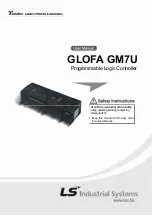
NHRC-10 User Guide
Page 4
Copyright
1999, 2000, 2001 NHRC LLC. All Rights Reserved.
2. Electrical Connections
This section of the User Guide describes the electrical interfaces used to connect the
controller to:
•
power,
•
repeater and link radios,
•
the control receiver, and
•
NHRC-DAD digital audio delay boards.
It is intended for the repeater operator to use in the planning and installation of the NHRC-
10 Repeater Controller into a repeater system.
2.1 Input and Output Signal Levels
Control signals into the NHRC-10 are active-high signals. The repeater activity inputs
(CAS and CTCSS Decode) are buffered in the controller to allow the connection of
popular radios to the controller. Signal levels should be 0.0 to 0.5 volts for off, and 2.0
to 16.0 volts for on.
The controller’s PTT and FAN CONTROL outputs are “open-drain” connections to
power MOSFETs. These outputs are active-low, and when activated, will pull the
control signals to within a few ohms of ground. These outputs can sink 100 mA or so.
NHRC recommends that diodes be used to protect the MOSFETs from back-EMF if
these signals are used to drive relays.
Audio signals into the controller should be in the range of 0.2 to 2.0 volts peak-to-peak.
The controller’s transmit audio outputs are adjustable from about 0.1 volt to about 5
volts peak-to-peak.
The optional NHRC-10_DOUT digital output board provides eight additional digital
outputs. These outputs are “open-drain” connections to power MOSFETs. These
outputs are active-low, and when activated, will pull the control signals to within a few
ohms of ground. These outputs can sink 100 mA or so. NHRC recommends that diodes
be used to protect the MOSFETs from back-EMF if these signals are used to drive relays.











































